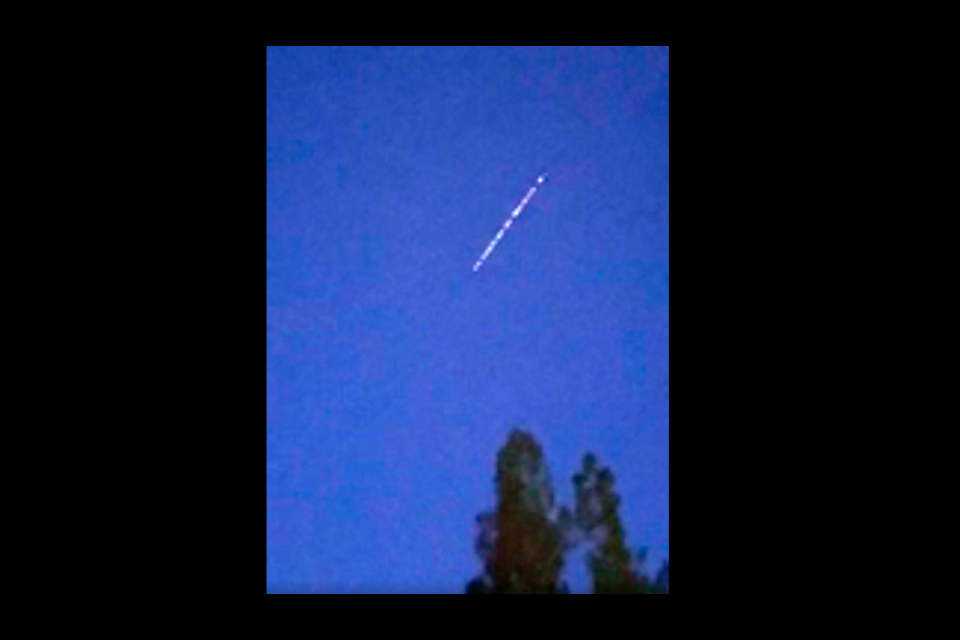Perhaps all too fittingly, on Star Wars Day Vancouverites spotted what could easily be construed as some Unidentified Flying Objects -- a line of bright white lights crawling across the night sky.
What they were seeing is Starlink, another of Elon Musk’s endeavours to provide low-latency high-speed internet around the world. Launched at 3:01 p.m. EDT May 4 from the Kennedy Space Center in Florida off a SpaceX launchpad, a rocket carrying 60 Starlink satellites took to the sky and into space. Approximately an hour later the satellites were deployed.
explains that when satellites are far from Earth, latency is high, resulting in poor performance for activities like video calls and online gaming. Starlink satellites are over 60 times closer to Earth than traditional satellites, resulting in lower latency and the ability to support services typically not possible with traditional satellite internet.
This most recent launch adds to the already in orbit 1,200 satellites that make up the Starlink network. No small task, the National Aeronautics and Space Administration (NASA) has supported the SpaceX endeavour in a joint agreement formalized in March.
“The focus of the agreement is on conjunction avoidance and launch collision avoidance between NASA spacecraft and the large constellation of SpaceX Starlink satellites, as well as related rideshare missions,” a reads.
“The Starlink spacecraft are equipped with global navigation satellite service receivers to estimate orbital parameters, an ion propulsion system, and an autonomous maneuvering capability that provide data for prompt and proactive exchange of information. Both NASA and SpaceX benefit from this enhanced interaction by ensuring all parties involved are fully aware of the exact location of spacecraft and debris in orbit.”


